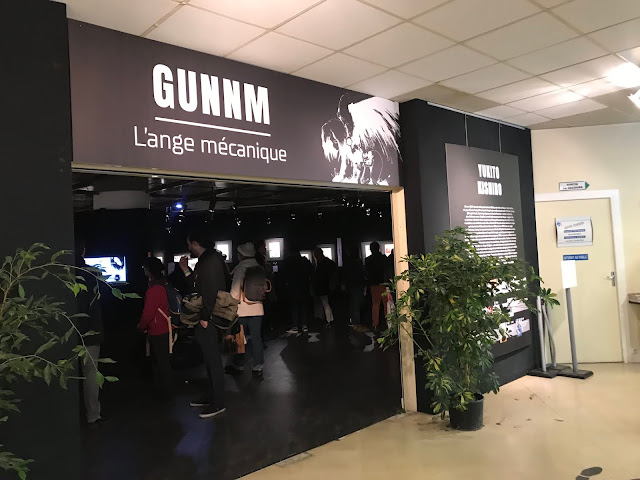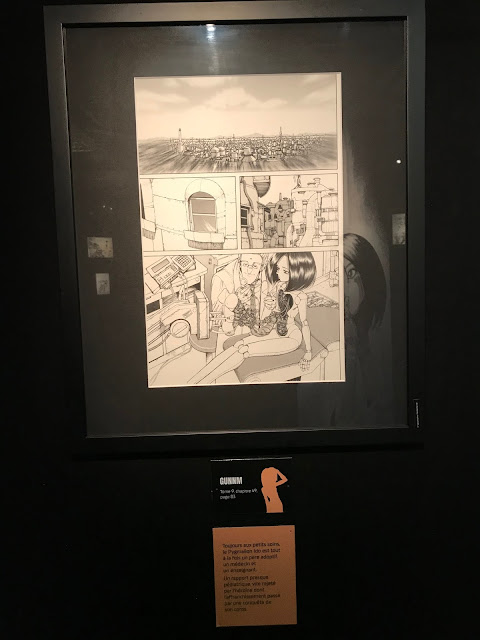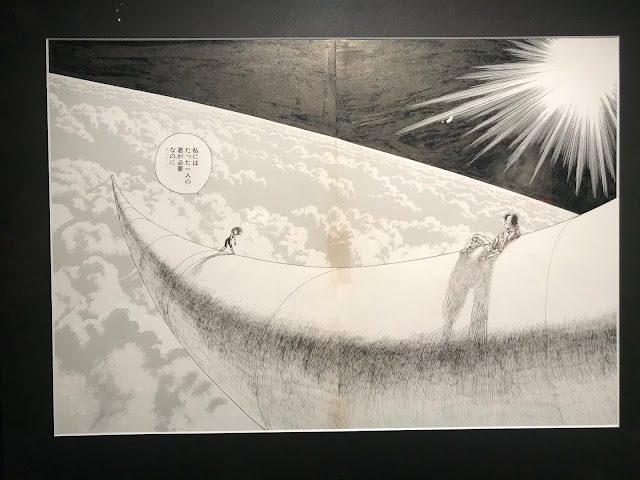
INTERNATIONAL
JOURNAL OF COMIC ART
Vol. 21 , No. 1
Spring/Summer 2019
This issue has been out for months, but my copies got lost in the
mail. It even happens to editors when you produce an 800+ page journal.
Table of Contents
Ito Hirobumi's Nose: Syphilis in Early
20th Century Japanese Cartoons
Ronald Stewart
1
"You Are Leaving the French
Sector": Flix's Spirou in Berlin and the
Internationalization of German Comics
Paul M. Malone
28
As I Please: A Personal Reflection
on Censorship
Anton Kannemeyer
52
The "Bobo" (bourgeois-boheme)
as Post-Modern Figure? Gentrification and Globalization in Dupuy and
Berberian's Monsieur Jean and Boboland
Annabelle Cone
62
Graphic Testimonies of the Balsero Crisis
of 1994: Narratives of Cuban Detainees at the Guantanamo Naval Base
Tania Perez-Cano
79
Comics Reinventing Creativity in the
Museum: Some Thoughts about the Show "Viii.etas Desbordadas/Overflowing
Panels"
Ana Merino
105
Ishii Takashi, Beyond 1979: Ero
Gekiga Godfather, GARO Inheritor, or Shiijo Manga Artist?
Jon Holt
118
Of Bears, Birds, and Barks: Animetaphoric
Antagonism and Animalsceant Anxieties within Dell Funny Animal Franchise Comics
Daniel F. Yezbick
143
Wang Ning, Beijing Total Vision Culture
Spreads Co. Ltd., and the Transnationalization of Chinese Comic Books
John A. Lent
171
Pointed Language: Reading Paola
Gaviria's Virus Tropical (2009) from the Perspective of the Visual
Protocols of the Graphic Novel
Alvaro Aleman and
Eduardo Villacis
184
On Butterflies, Viruses, and Visas:
Comics and the Perils of Diasporic Imagined Communities
Hector Fernandez
L'Hoeste
192
The City and the Medium of Comics: Depiction
of Urban Space in Sarnath Banerjee's Corridor and The Barn Owl's
Wondrous Capers
Anu Sugathan
216
Crossing Borders: Graphic Novels Quoting
Art
Dietrich Griinewald
Translated by
Christina Little
242
That Chameleon Quality: An Interview
with R. Sikoryak
Kent Worcester
275
Popular Format and Auteur Format in
Italian Comics. The Case of Magnus
Sara Dallavalle
300
Chile's Military Dictatorship and Comics
as Alternative Methods of Memorialization: Critical Approaches from
Contemporary Chilean Graphic Novels
Sam Cannon and Hugo Hinojosa
Lobos
329
Marjane Satrapi's Persepolis and Embroideries:A
Graphic Novelization of Sexual Revolution across Three Generations of Iranian
Women
Leila Sadegh Beigi
350
A Sublime in Tension Around Alexandre
Fontaine Rousseau and Francis Desharnais' Les Premiers Aviateurs
Mathieu Li-Goyette
366
"They're Quite Strange in the
Larval Stage": Children and Childhood in Gary Larson's "The Far
Side"
Michelle Ann Abate
390
Marxism Across Media: Characterization and
Montage in Variety Artwork's Capital in Manga
Magnus Nilsson
423
The Desi Archie: Selling India's
America to America's India
Debarghya Sanyal
439
Gay Male Porno Comics: Genre,
Conventions, and Challenges
Sina Shamsavari
463
Ambitious Women in Male Manga Magazines:
Sakuran and Hataraki-Man by Anno Moyoco
Yasuko Akiyama
498
"Hey Kids, Patriarchy!":
Satire and Audience on the Back Covers of Bitch Planet
Aimee Vincent
508
The Fine Art of Genocide: Underground
Comix and U.S. History as Horror Story
Chad A. Barbour
519
Superman's Remediation of Mid-20th
Century American Identity
John Darowski
539
A Matter of Affect: Illustrated
Responses to the Immigration Debacle
Hector Fernandez
L'Hoeste
551
Random Notes of the Editorial Office of
China's Manhua Magazine
Bi Keguan
Edited by Bi Weimin
Translated by Xu Ying
567
The Chus: A Family Teeming with
Cartoonists
Chu Der-Chung (Zola
Zu) with John A. Lent
Translation by Xu
Ying
585
Faith in Comics: Ex-voto Religious
Offerings and Comic Art
Alvaro Aleman and
Eduardo Villacis
594
Translated Hispano-American Comics in
Brazil
Barbara Zocal Da Silva
602
An Afternoon with R. 0. Blechman
Conversation with Jan
Ziolkowski and Ariana Chaivaranon
627
Kennedy Conspiracy Comics: en Espanol!
John Gardner
645
The Myth of Frankenstein from Mary
Shelley to Gris Grimly: Some Intersemiotic and Ideological Issues
Michela Canepari
665
The
Best We Could Do: A Mini-Symposium
The Role of Water in the Construction of Refugee
Subjectivity in Thi Bui's The Best We Could Do
Isabelle Martin
693
A Burden of Tales: Memories, Trauma, and Narratorial Legacies in The Best We Could Do and Munnu
Debarghya Sanyal
704
The Fragmentary Body: Traumatic
Configurations in Autobiographical Comics by Women of Color
Francesca Lyn
710
A Graphic Medicine Prescription
A. David
Lewis
724
Pioneers
in Comics Scholarship
My Life with American Comics: How It
Started
Kosei Ono
732
Nature of Reality in the Graphic:
"Calvin and Hobbes"
Shefali Elizabeth
Mathew
738
The Mindset of a Professional Exhibition
Curator
Introduced by Jochen
Garcke
748
Remembrances
One Life, Many Loves: Dario Mogno's
Passion for Cinematography, Publishing, Comics, and Cuba
Licia Citti
772
The Printed Word
John A. Lent
780
Review Essays
Shawn Gilmore
790
David Kunzie
805
Exhibition Review Essay
Jean-Paul Gabilliet
811
Book Reviews
Rachel Kunert-Graf
Stephen Connor
Kirsten Mollegaard
John A. Lent
Maite Urcaregui
820
Exhibition and Media Reviews
Carli Spina
833
Correction
839
| IJOCA published twice yearly, appearing between March-May and Oct.-Nov. |
Prices from 2011 for IJOCA:
Institutions:
domestic US$100
foreign US$120
Individuals:
domestic US$45
foreign US$60 |
| Payment can be
made by international money order personal check (for U.S. subscribers),
checks made on U.S. banks, or cash. Sorry, no credit cards. |
Back issues are
available at the same rates as above. The following are out of print:
Vol. 1, nos. 1 and 2; Vol. 4, no.2, and Vol. 7, no.1. We hope to reprint
these numbers soon.
There is no online version of the IJOCA |
| Subscriptions should be ordered directly from: |
Contact: John A. Lent
669 Ferne Blvd.
Drexel Hill, PA 19026
U.S.A.
Email: jlent@temple.edu
Phone: 610-622-3938
|
| Manuscripts should be sent electronically to John A. Lent, email: jlent@temple.edu and john.lent@gmail.com.
The manuscript should include, title (not very long), author, text,
endnotes, references, short bio data of author, in that order. |












































